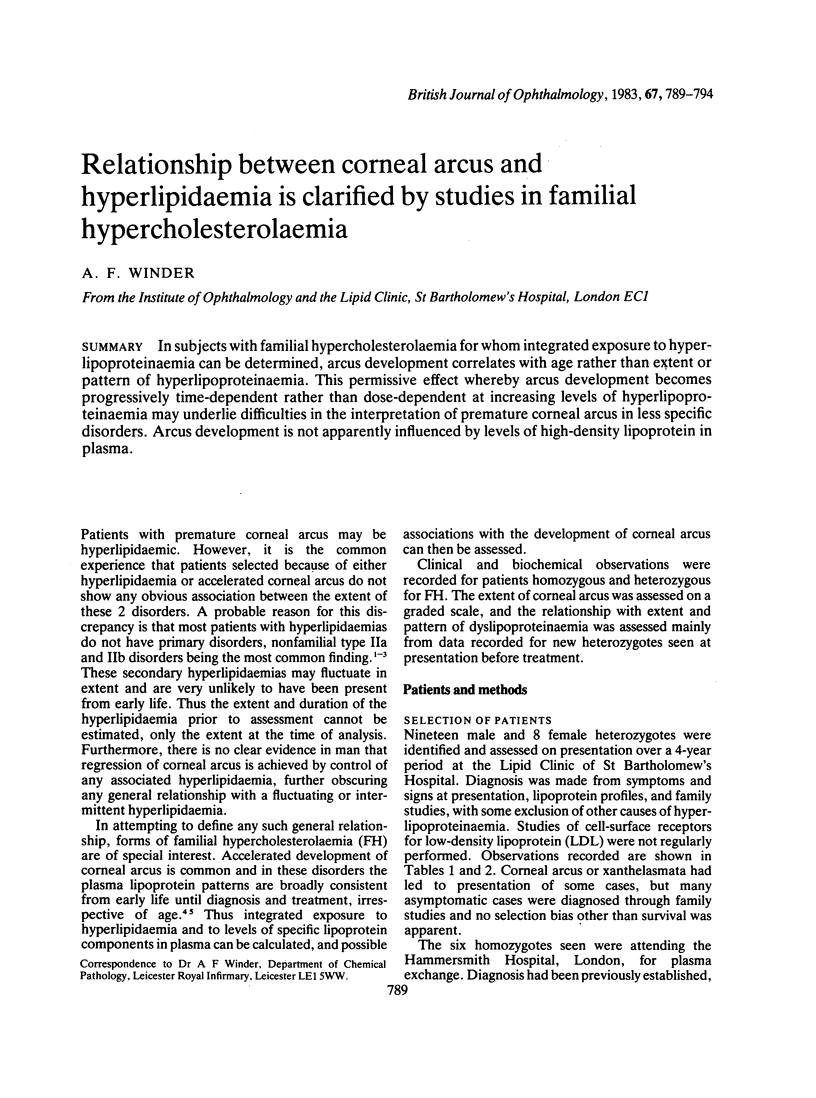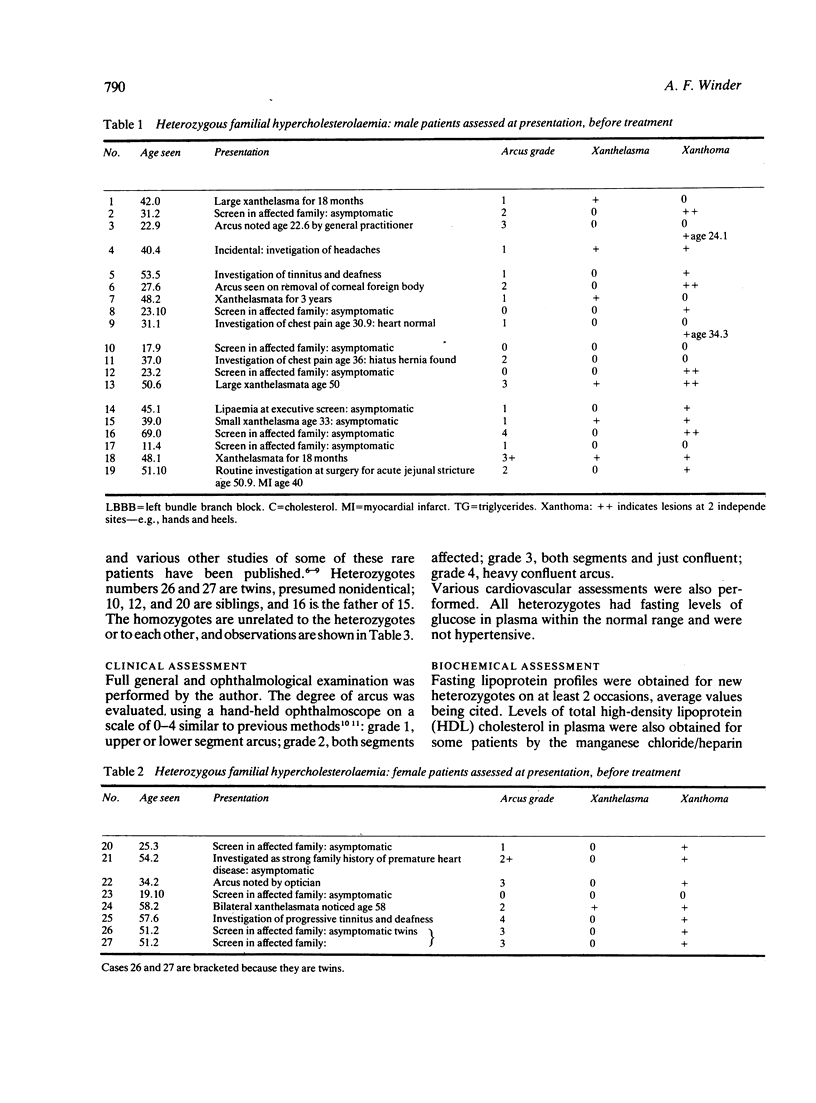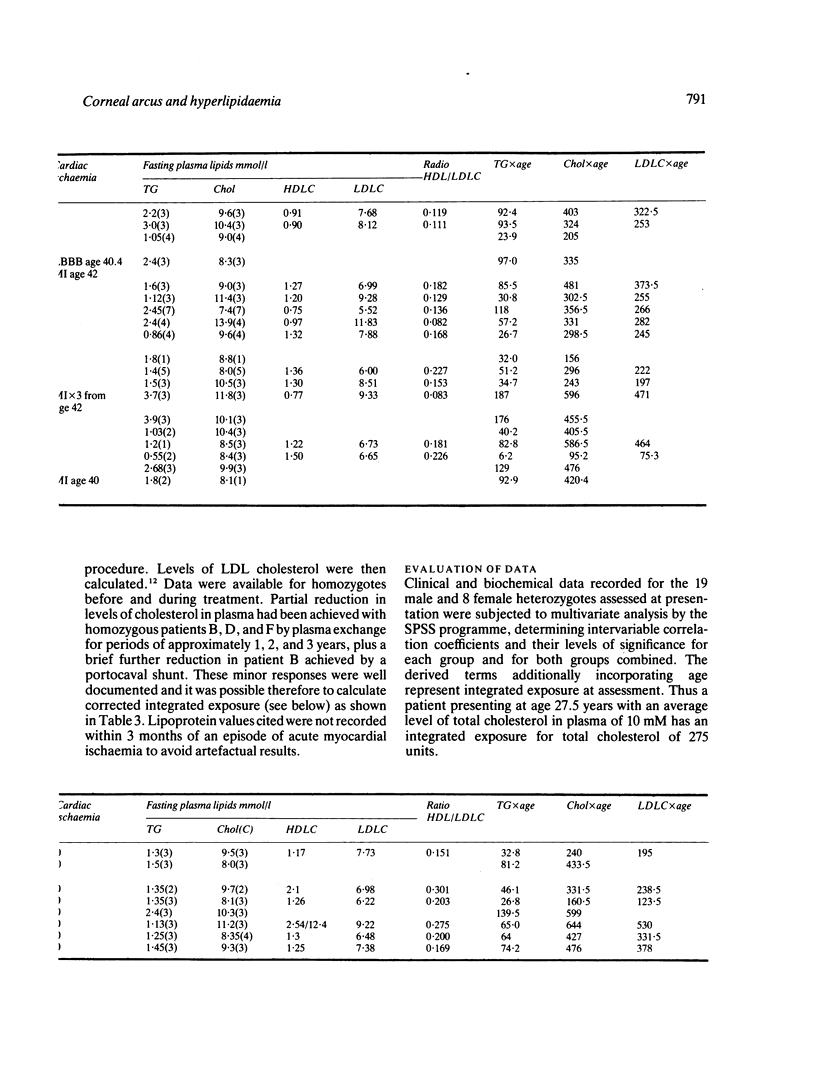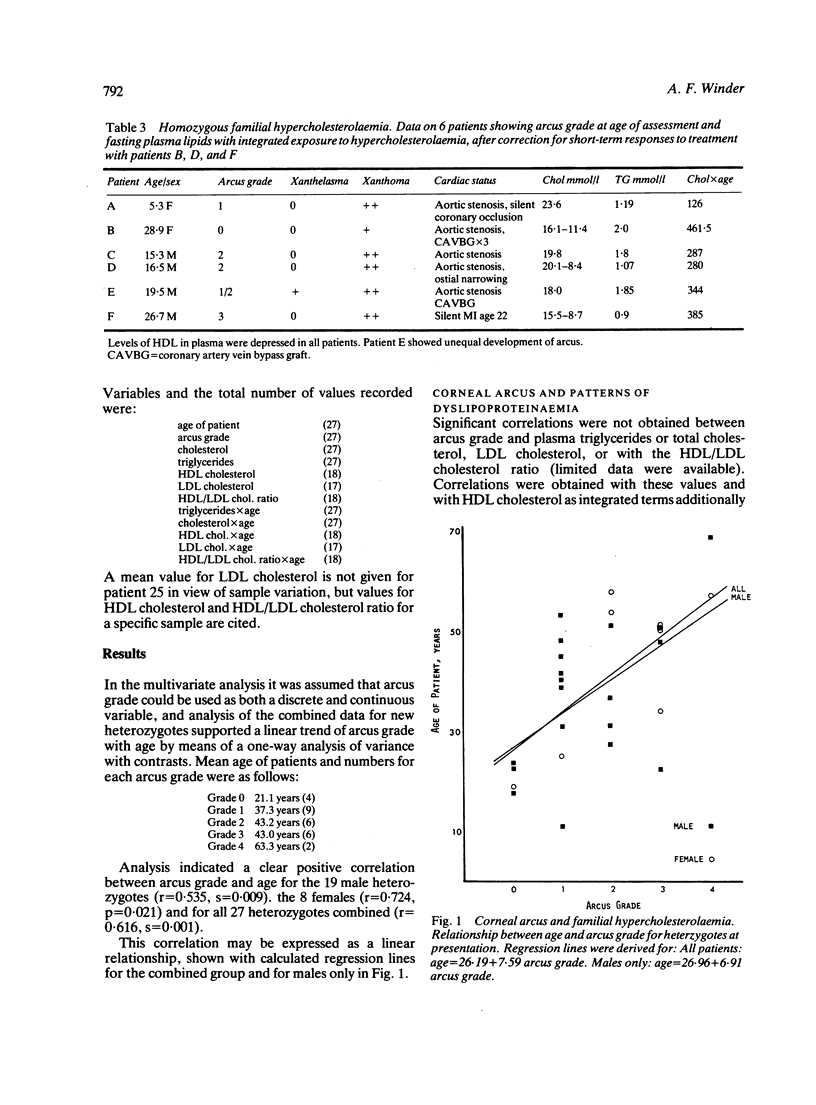Abstract
In subjects with familial hypercholesterolaemia for whom integrated exposure to hyperlipoproteinaemia can be determined, arcus development correlates with age rather than extent or pattern of hyperlipoproteinaemia. This permissive effect whereby arcus development becomes progressively time-dependent rather than dose-dependent at increasing levels of hyperlipoproteinaemia may underlie difficulties in the interpretation of premature corneal arcus in less specific disorders. Arcus development is not apparently influenced by levels of high-density lipoprotein in plasma.
Full text
PDF





Selected References
These references are in PubMed. This may not be the complete list of references from this article.
- Cooke N. T. Significance of arcus senilis in Caucasians. J R Soc Med. 1981 Mar;74(3):201–204. doi: 10.1177/014107688107400308. [DOI] [PMC free article] [PubMed] [Google Scholar]
- Friedewald W. T., Levy R. I., Fredrickson D. S. Estimation of the concentration of low-density lipoprotein cholesterol in plasma, without use of the preparative ultracentrifuge. Clin Chem. 1972 Jun;18(6):499–502. [PubMed] [Google Scholar]
- Kwiterovich P. O., Jr, Fredrickson D. S., Levy R. I. Familial hypercholesterolemia (one form of familial type II hyperlipoproteinemia). A study of its biochemical, genetic and clinical presentation in childhood. J Clin Invest. 1974 May;53(5):1237–1249. doi: 10.1172/JCI107670. [DOI] [PMC free article] [PubMed] [Google Scholar]
- Macaraeg P. V., Jr, Lasagna L., Snyderb Arcus not so senilis. Ann Intern Med. 1968 Feb;68(2):345–354. doi: 10.7326/0003-4819-68-2-345. [DOI] [PubMed] [Google Scholar]
- Rosenman R. H., Brand R. J., Sholtz R. I., Jenkins C. D. Relation of corneal arcus to cardiovascular risk factors and the incidence of coronary disease. N Engl J Med. 1974 Dec 19;291(25):1322–1324. doi: 10.1056/NEJM197412192912503. [DOI] [PubMed] [Google Scholar]
- Sheraidah G. A., Winder A. F., Fielder A. R. Lipid-protein constituents of human corneal arcus. Atherosclerosis. 1981 Aug-Sep;40(1):91–98. doi: 10.1016/0021-9150(81)90127-1. [DOI] [PubMed] [Google Scholar]
- Soutar A. K., Myant N. B., Thompson G. R. Simultaneous measurement of apolipoprotein B turnover in very-low-and low-density lipoproteins in familial hypercholesterolaemia. Atherosclerosis. 1977 Nov;28(3):247–256. doi: 10.1016/0021-9150(77)90174-5. [DOI] [PubMed] [Google Scholar]
- Thompson G. R., Lowenthal R., Myant N. B. Plasma exchange in the management of homozygous familial hypercholesterolaemia. Lancet. 1975 May 31;1(7918):1208–1211. doi: 10.1016/s0140-6736(75)92193-5. [DOI] [PubMed] [Google Scholar]
- Thompson G. R., Myant N. B., Kilpatrick D., Oakley C. M., Raphael M. J., Steiner R. E. Assessment of long-term plasma exchange for familial hypercholesterolaemia. Br Heart J. 1980 Jun;43(6):680–688. doi: 10.1136/hrt.43.6.680. [DOI] [PMC free article] [PubMed] [Google Scholar]
- Winder A. F. Factors influencing the variable expression of xanthelasmata and corneal arcus in familial hypercholesterolaemia. Birth Defects Orig Artic Ser. 1982;18(6):449–462. [PubMed] [Google Scholar]


